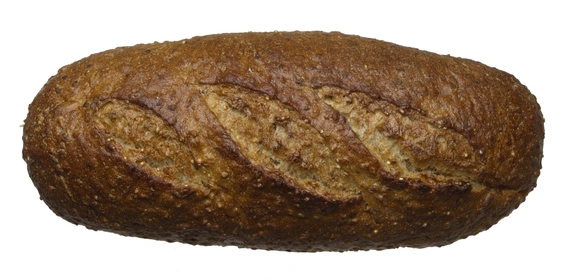by Joanne Camas
We're being told to eat more whole grains. There's no escaping the message. But do most people know exactly what "whole grain" means? "The definition should be simple, but it's impressively not," says Catherine Meng, communications manager at Community Grains in Oakland, CA, which buys a variety of local grains from mid-size farmers and sells them as whole-grain flours and pastas.
"'Whole' should be 100 percent of the grain," she adds, "and yet for some reason it is often 51 percent or can allow some sifting or separation. There always seems to be an inordinate amount of small print or confusing language when it comes to whole grains."
Even the government hasn't nailed down a definition of "whole grain." "The FDA has been trying for some time, but only got as far as a draft in 2010," explains Meng. "That is why we felt compelled as a company to create our own Whole Grain Standard that is on all of our boxes and states that we mill our grain whole and never separate it. Nothing is taken out, nothing is added."
Whole grains also have better taste and nutritional value than their processed cousins, says Meng. "A huge part of the flavor of wheat gets lost in most conventional milling. The germ contains oils that help transmit flavor and adds richness, and the bran is packed with fiber and adds texture -- two parts of the wheat seed that are not included in white flour.
"We are about flavor first, but at the same time it is alarming to see so much of what ails us health-wise linked back to highly processed foods. Milling is at heart a form of food processing," Meng explains, "but we believe there are ways to do it that preserve as much flavor and nutrients as possible, resulting in a product that tastes better and is better for you."
Community Grains is working on selling both whole-grain products and the idea that people will need to pay more for local grains from small farmers. "A good number of people still believe that the staples should be the cheapest," Meng says, "and the structure that exists (large-scale industrialized centralized farming and processing) allows for that. That structure does not allow for smaller-scale farms wanting to grow grains for their immediate community, nor does it allow for the consumer to know where their grain is coming from or how it was processed."
Identity Preserved Fettuccine is an example of the way Community Grains works to inform and educate customers. "On the front of the package we list the type and variety of the wheat, where it was grown, when it was harvested, and where and when it was milled," Meng adds.
But why does local have to mean more expensive? Meng says processing grain on a smaller scale requires infrastructure that existed before the Industrial Revolution but no longer does. "Creating that infrastructure is one part of that additional cost, but also once you are existing outside of that industrialized, automated system, there is a greater amount of skill and knowledge required," she says. "Once people understand that part of our mission -- to empower the farmer, the miller, and the eaters -- they are willing and eager to pay more. Our IP fettuccine has been a huge hit at local farmers' markets."
Community Grains flour was recently featured in The New York Times: "Martha Rose Shulman did a week's worth of focaccia recipes using our flour that had the whole office drooling," says Meng. "The potato focaccia in particular is one that exemplifies the kind of creativity cooking with whole grains allows for. Maria Speck is another wonderful resource."
Meng's personal favorite recipe? "Chocolate chip cookies are something most people take for granted and assume can't really be improved on, but our flour adds a whole new level of flavor -- also, the texture is better and they look gorgeous, with a dark, golden color. It is impossible to go back to white-flour chocolate chip cookies after having Community Grains whole-grain cookies!"
